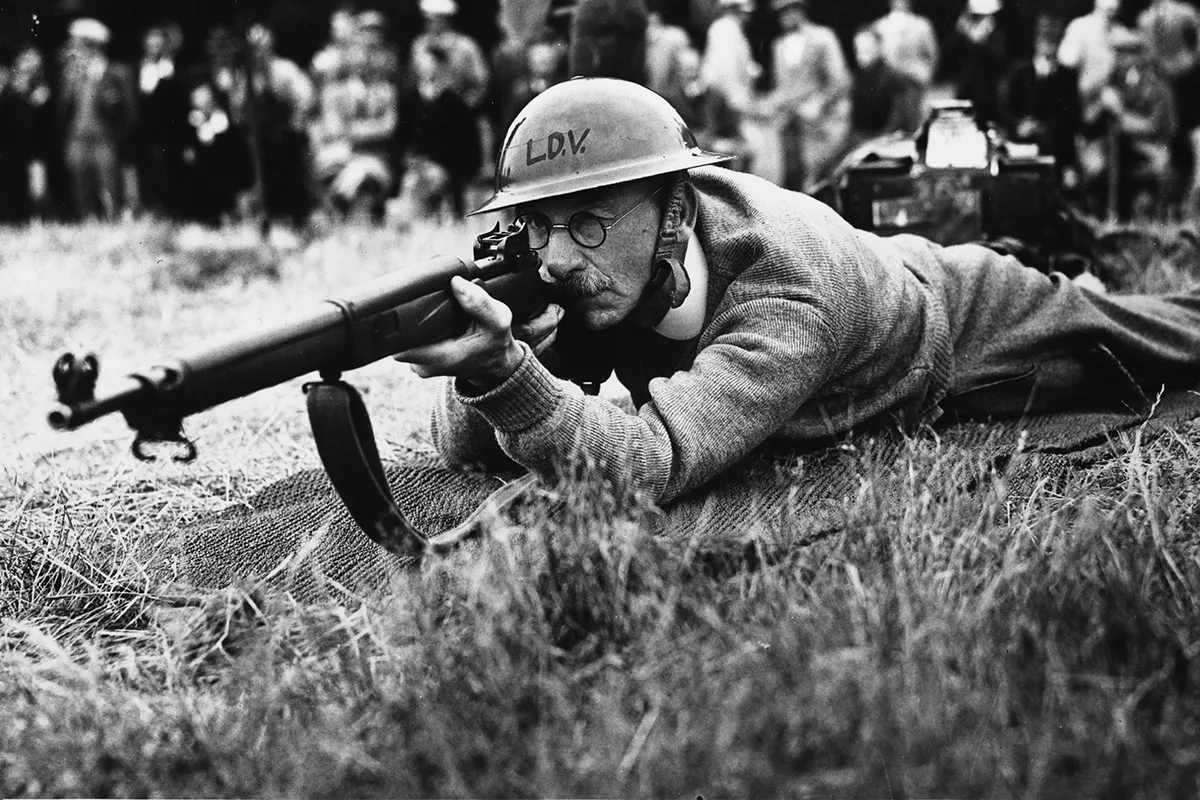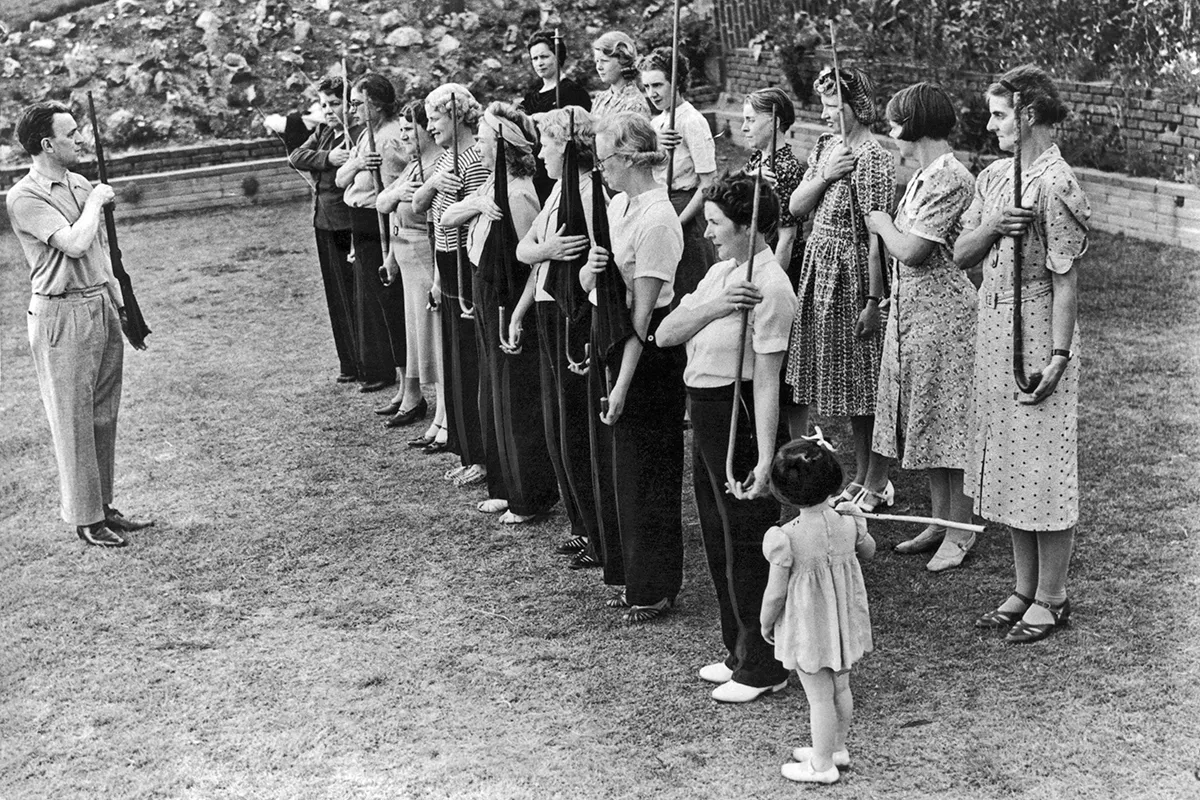During the Second World War in Britain, individuals who were exempt from normal military service could volunteer instead with the Home Guard – an armed civilian militia prepared to defend the country in the event of a German invasion. At its peak, the Home Guard had 1.7 million members.
When was the Home Guard formed?
On 14 May 1940 the Secretary of State for War, Anthony Eden, made a speech to the nation on BBC radio. The Second World War was not going well for Britain. Holland and Belgium were on the point of collapse and the British Expeditionary Force was in full retreat towards the Channel Coast and Dunkirk.
Eden warned that in Holland and Belgium, the Germans were successfully deploying “the dropping of troops by parachute behind the main defence lines”. To repel a potential invasion, he called for volunteers: “We want large numbers of…. British subjects between the ages of 17 and 65 to come forward and offer their services…. You will not be paid but will receive uniforms and will be armed. In order to volunteer, what you have to do is give your name at your local police station.” Even before the broadcast was at an end, police stations (some of which were not even aware of what they should have been doing) were besieged by volunteers. It was the beginning of the Local Defence Volunteers (LDV), soon to be renamed the Home Guard by Winston Churchill.
Even before the broadcast was at an end, police stations were besieged by volunteers.
What did the Home Guard do?
When the Home Guard was initially formed, units manned road blocks and fixed defences around vital positions such as bridges and viaducts and patrolled against German paratrooper or seaborne landings. In late 1941 some Home Guard units were given an anti-aircraft role because the troops of Anti-Aircraft Command were being transferred to regular units for service overseas. By March 1942 over 11,000 Home Guard were being trained to man guns and searchlights, and the numbers grew as the war progressed.

What weapons did the Home Guard use?
Weapons were initially scarce for the Home Guard. Shotguns were prized, as well as any old hunting guns and trophy weapons from previous conflicts. Many Home Guard volunteers paraded with knives tied to broomhandles or with agricultural implements such as scythes. The government’s first priority was the re-equipment of the army after it abandoned much of its equipment at Dunkirk. The Home Guard were later issued with mothballed rifles from the First World War purchased from the Canadian and American governments. At the height of the invasion scare most units were still hopelessly under-equipped and hadn’t fired a practice shot. On 3 July 1940 the War Diary of 19th Battalion Kent Home Guard is noted: “Permission received to fire 3 rounds per rifle.”
Many Home Guard volunteers paraded with knives tied to broomhandles or with agricultural implements such as scythes.
Who served in the Home Guard?
Though the TV programme Dad’s Army may have given the impression that most Home Guard volunteers were old men with previous military experience, figures show that only 40% of men had served previously, mostly during the First World War. Naturally these men tended to take up positions of responsibility in the Home Guard. Because of the rapid creation of their units the Home Guard volunteers generally took it upon themselves to appoint their own officers. Some units held elections; in most, especially in rural areas where the spirit of deference was stronger, local landowners and officials took over. In many of the factory units the foremen and managers assumed the roles.
Probably the oldest man to have served in the Home Guard was actually a ‘Corporal Jones’ figure, having served in the army in the Sudan. Thomas Walton was 84 when he lied about his age and joined the Home Guard in 1940.
Thomas Walton was 84 when he lied about his age and joined the Home Guard in 1940.
Though the Home Guard is thought of as an all male preserve there were always women associated with the units performing the valuable jobs of providing refreshments and doing administration, and in 1943 a ‘Women’s Auxiliary’ was formed.

When did the Home Guard end?
Following D-Day and the success of Allied armies in France it became increasingly clear that the role of the Home Guard was over. They were stood down with a parade in London on 3 December 1944. The whole Home Guard was officially disbanded on 31 December 1945.
How to find Home Guard records
Most Home Guard records are currently held by the Ministry of Defence, to whom you should apply to view a relative's service record.
Home Guard records are not like other military service records and will not feature actions performed by your ancestor. They normally just consist of the single sheet of paper that was filled in at enrolment.
The Durham Home Guard enrolment forms are currently free to download from The National Archives’ website (also searchable on Findmypast with a subscription). These are the forms that individuals filled in when they joined the Home Guard and include name and place and date of birth as well as the battalion they joined.
Subscribers to Ancestry can see the other kinds of Home Guard records that might be held in local archives by browsing the Lancashire Home Guard records published in association with Lancashire Archives. The collection includes casualty records, battalion nominal registers (with addresses) and discharge and transfer registers.
There are also some Home Guard war diaries and unit histories in record series WO 199 (Home Defence) at The National Archives. You may also be able to find records relating to the Home Guard in your local archive. There is an excellent website dealing with the general history of the Home Guard available here.
